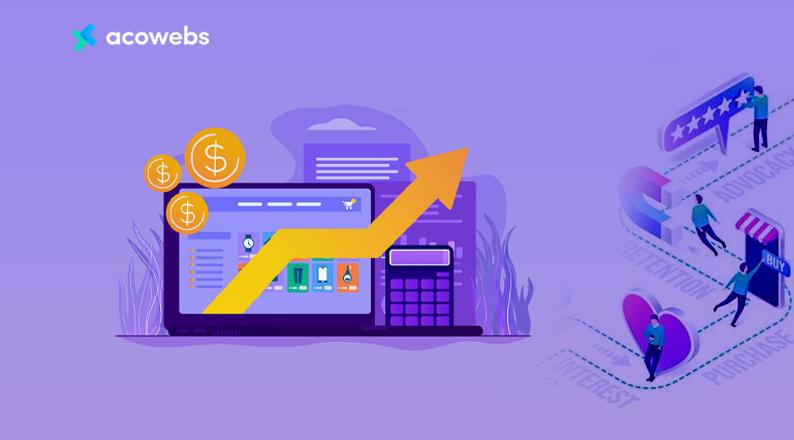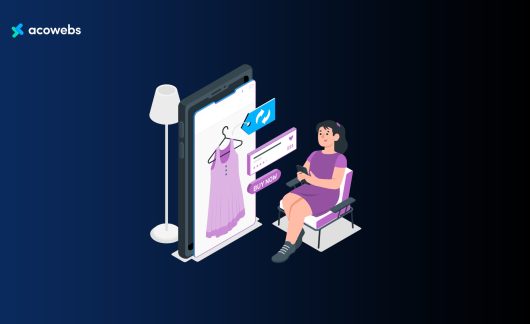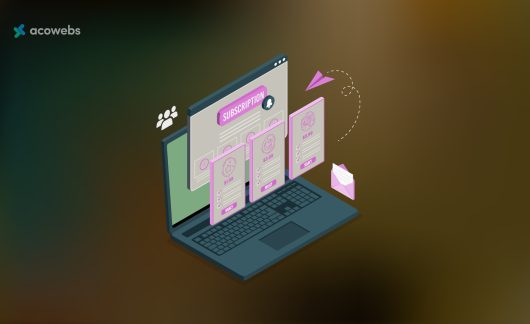How many times have you been browsing the internet and landed on a product page, only to leave without purchasing? Chances are it’s happened more than once.
In order to get people who have shown interest in your products but haven’t yet purchased anything, you need to be able to convert those browsers into buyers. The best way to do this is through the use of purchase intent data.
Purchase intent is the mindset that your target client has when making purchasing decisions. Yes, you can know how close a target client is to purchasing. Just follow their actions on your eCommerce store.
But how?
In this blog post, we will be discussing the importance of knowing your customers’ purchase intent and how to use it to get more sales for your eCommerce store.
Strategies that Capture Purchase Intent
The customer’s intent to make a purchase can be determined by a range of factors. Traditional marketers have relied on demographics alone over the years.
However, in order to win big in such times, it is important to accurately capture the intent so as to nurture the customer down the sales funnel.
According to Google’s Global Marketing VP, marketers who rely solely on demographics when creating an outreach campaign risk missing 70% or more potential mobile shoppers.
According to the VP, understanding customer intent is paramount.
There are endless strategies that you can use to capture a potential customer’s purchase intent. Here are the top 6 strategies that are simple and easy to implement.
- Website analytics: who is coming to visit your site? What do they do while on the site?
- Set up codes to help retarget and remarket to visitors who didn’t make a purchase
- Allow subscriptions for out-of-stock products
- Allow target customers to make pre-orders
- Craft your social media posts to make them shoppable
- Set up pop-ups to re-engage visitors who are leaving the site
Granted, a lot of eCommerce stores spend a lot of money trying to drive traffic to the store.
These efforts are in the form of paid ads, email marketing, digital marketing, apps, product launches, and the like.
With such a sizeable budgetary allocation, it is only wise to get all possible insights from the traffic.
ALSO READ: How to Create a Customer Journey Map
Website Analytics
The best thing about website analytics is that they show you everything about your visitors.
They show where the visitors are, their gender, average age, what they are looking at, what they click on, what they add to the cart, everything.
They also show whether the visitors are from another site, social media, or from emails and search engine results pages.
As an eCommerce shop, you will probably notice this trend when it comes to your customers.
- They visit the store
- They view products
- They add to the cart and start the checkout process
- Explore upsells and offers
- Complete the purchase
While some customers will come to your site and make a purchase within minutes, others will not. Analytics will show you where the bulk of your target clients are.
If customers are stuck in the add-to-cart process without checking out, they are probably looking for a cheaper alternative.
In such a case, you can send targeted content that assures them of the quality of the product. It is also best to assure them that they are making the right choice by purchasing from you.
ALSO READ: Tips to use content marketing for eCommerce sales
Retargeting And Remarketing Codes
You will realize that a good number of interested customers do not make a purchase on their first visit. Some can go to the extent of adding items to the cart then leaving. The average cart abandonment rate is 69.6%!
As an eCommerce store, you will not always be there to nudge them into buying when they have expressed immense interest. This is why it is necessary to send them gentle nudges to influence their purchase.
Retargeting and remarketing pixels can be inserted into the eCommerce store’s backend to give more information about the interests of your target customers.
The pixels help in crafting ads that are targeted to specific consumers on the social platforms that they use. The continuous reminders accompanied by similar recommendations influence purchase intent towards conversion.
Shoppable Social Media Posts
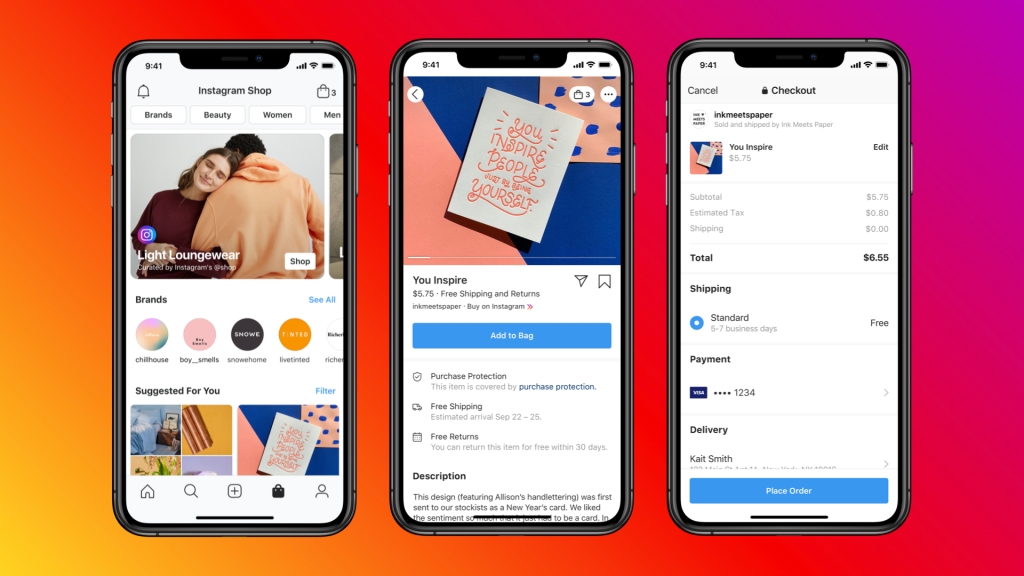
Visual appearance can influence a consumer into making a purchase. In fact, 93% of customers consider the visual appeal of a product as a key factor when making a purchase.
The human mind finds it hard to resist visually appealing things. This is where social media platforms such as Instagram will help you get more sales.
Since social media posts are generally visually appealing, potential customers will be drawn to them.
Make it easier for them to make a decision by allowing them to buy right there on the post. This can be as simple as adding shop tags and store redirects on the post.
Subscriptions For Products That Are Out of Stock
Did you know that more than 91% of customers who leave an eCommerce store in search of a product and buy it elsewhere never return to the first store?
Yes, if customers come to your page to look for something only to find that it is out of stock, they are likely never to come back if they find the item elsewhere.
Additionally, search engines take note of such behavior and can lower the rank of your site.
Ecommerce stores have to make sure that they are never out of stock, if they do go out of stock, there should be a prompt to encourage the customer to subscribe to the item.
The subscription will allow the customer to share their contact details for updates.
Customers can get a notification when the product is restocked. This allows the business to keep track of the customers who are interested in a certain product, and prompt them to make a purchase once stocks are available.
ALSO READ: Using Personalization On Your Online Store To Enhance Customer Experience
How To Use Purchase Intent to Increase Sales

Every buyer goes through a journey before they settle on that one item that they eventually purchase. You can easily know the stage at which they are at based on their actions. Here is a simplified buyer journey.
- The awareness stage is where the buyer sees your product and is aware of the pain points it can solve. At this point, you only need to focus on the pain points and the problems that they could be facing
- The interest stage is where the customer discovers that maybe you can solve their problem. At this stage, focus on the solutions. Educate the prospects and help them to evaluate the options available to them
- The considerations stage is where the customer begins to evaluate your products and willingly engages you. At this point, give them as much information as they need. Give them a preview of how good it will be to work with you
- The purchase stage is where the customer commits to paying for the solutions that you offer. At this point, validate their choice, make the purchase process easy, fast and pleasurable. Offer guides and excellent service
- The post-purchase stage has the customers expecting great value from their purchase. At this stage, it is important to retain excellent customer service, offer more information and guides as may be needed and make them feel important
- The repurchase stage is where the customer now wants to get more of what you have to offer. Stay in touch, offer discounts where applicable, explore opportunities to expand product use, sign them up for a newsletter, etc.
Each stage of the buying cycle requires targeted marketing and content. Here’s how this intent can be used to drive up sales.
Use High-Intent Keyword Phrases in Marketing Content and Ads
Effective ads and marketing content should target where the customer is in the buying cycle. Based on the unique offering, you can craft your SEO content and advertising campaigns around the buyer stage you want to target.
Keyword research tools can help you identify the specific keywords to use to appeal to your target buyer. Your Google Analytics will also show you the searches that your potential clients are making.
SEMRush or Google Keyword Planner can also help you to identify high intent keywords to use. A detailed Semrush review can help you to know more about this SEO keyword research tool.
Get a Lead Scoring System
A lead scoring system shows you who to target, and how to engage them. Studies have shown that B2B companies close about 30% more deals when using a lead scoring system.
A lead scoring system allows you to assess your leads, how engaged they are, and how far along the sales funnel they are. This information can be found within your CRM.
You can look at how engaged the customer is with your content and products and craft your message to influence their purchase intent.
Action-Based Trigger Emails
Suppose a customer was browsing through your spring collection but leaves the site without making a purchase.
The next step will be to send a personalized trigger email with high-intent content to nurture them to conversion.
ALSO READ: Top 8 Social Media Strategies That Every E-commerce Store Needs To Implement
Conclusion
Businesses have never gone wrong with leveraging data to make strategic decisions. Sales and marketing operations are no exception.
The most vital skill is to master how to capture, interpret, and use the purchase intent data to drive up your eCommerce sales.
High-intent customer nurturing campaigns often effectively have a high conversion rate. This is because customers get to hear what they want to hear before making a purchase, as opposed to having random content thrown at them.
Customers are more likely to make a purchase when they feel seen, understood, and valued. With the right data, you can better understand their interests and solve their problems in a way that they appreciate.
Acowebs are developers of Woocommerce bulk discounts that will help you add bulk discounts to products on your stores. It also has developed various other plugins like the popular plugin for managing the checkout form fields in WooCommerce, called Woocommerce Checkout Manager, which is highly feature-oriented yet lightweight and fast. There is also a free version of this plugin available in the WordPress directory named WooCommerce Checkout Field Editor.












 Login
Login
 Cart
Cart